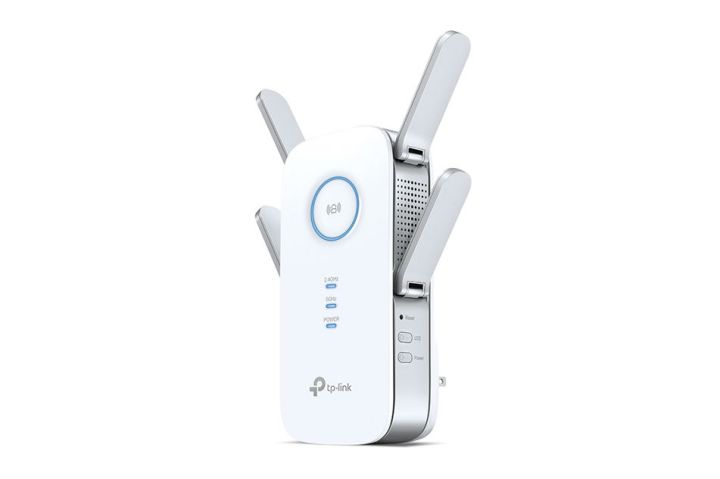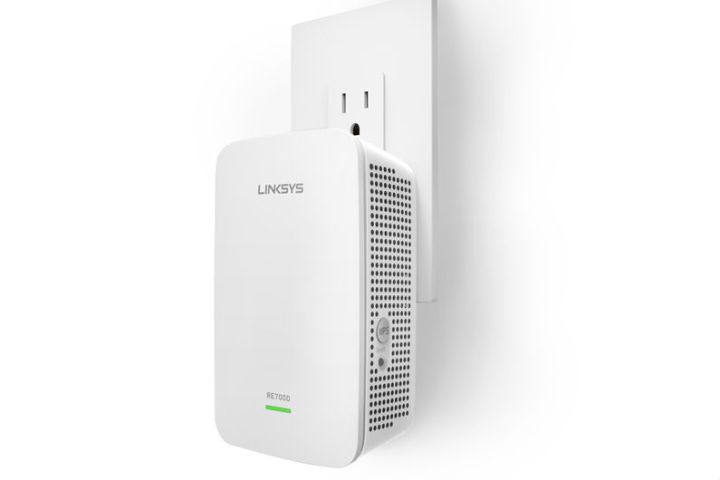If your Wi-Fi router lacks enough oomph to reach all your devices or leaves you with dead zones around the home or office, you’ve got a problem. As much as a decent router can alleviate that problem, Wi-Fi extenders can push your signal even further. Our favorite is the TP-Link RE650, which offers high speeds and MU-MIMO compatibility. However, if you are looking for something a little less pricey, we have picked other great models as well, including some very affordable options.
Note: Don’t confuse a “mesh” router and a Wi-Fi extender, although they can both solve the same problems. “Mesh” simply means that the router can link up to other routers of a similar kind to propagate a signal more effectively. Today’s mesh routers are often sold in packs of three, so you can spread them out around a building and solve coverage woes. Extenders may have mesh features, but most are unable to act as a router by themselves (and are more affordable as a result).
For a more affordable solution to the problem, you could also learn how to convert an old router into a Wi-Fi extender of your own.
TP-Link RE650

If you’re looking for an elite extender that doesn’t sacrifice your Wi-Fi quality (possibly for gaming or for a larger office, etc.), then this AC2600 TP-Link model is an excellent choice. It comes with a high-speed mode that prioritizes a stable connection and an intelligent signal indicator that will help you locate the right area for maximizing your Wi-Fi signal as much as possible — up to 14,000 square feet! It also supports the latest router technologies like MU-MIMO, so you don’t lose those advantages when extending your network. Like modern routers, this extender also uses beamforming to help maintain connections with wireless devices even if they aren’t MU-MIMO compatible.
The TP-Link RE650 is definitely the best extender we’ve found, but the price may be a little high for some buyers, especially those who don’t need to cover such a large area or who don’t need such a powerful signal. Fortunately, we have a lot of other options available for those who are looking for something less expensive! Check them out below.
Netgear Wi-Fi Mesh Range Extender EX7300

Netgear’s ambitious extender can increase Wi-Fi ranges by up to 2,000 square feet for up to 35 various devices, ideal for a small office or smart home, all at up to AC2200 speeds. Various Netgear tech is included, including giving preference to more demanding connections (like HD gaming) and smart roaming that helps interconnect the extender and router more reliably. The Netgear EX7300 even supports MU-MIMO for a limited number of more direct connections to mobile devices. The unit also has a Gigabit Ethernet port for wireless connections. It’s an especially strong choice for those who already have a Netgear router since they can use the same app for settings and parental controls.
D-Link EXO Range Extender

This dual-band AC1200 repeater can extend both 2.4GHz and 5GHz bands at once — plus a Gigabit Ethernet port for direct connections right where you may need them. The smart signal locator can help you place the extender in the right spot if you don’t already have a preference, and it supports Wi-Fi connections up to 2000Mbps. Independent WPA2 encryption is also supported to keep your network safe even when it’s extended.
The powerful connection capabilities make the D-Link EXO Range Extender especially well-suited for a home office that was previously too far away to connect the computer directly to an Ethernet port or for adding full connectivity options to a basement apartment or garage. It will take up an entire outlet, unfortunately, but you don’t need to spare any shelf space to gain all the benefits.
Linksys RE7000

This Linksys model may be small, but it packs a lot of power. The AC1900 extender can remove dead zones with intelligent beamforming, help you find the right location for plugging it in to get maximum coverage and increase your Wi-Fi zone by up to 10,000 square feet. It’s another extender that’s MU-MIMO compatible, so you don’t have to worry about upcoming compatibility issues for reliable connections to your newer devices. The Linksys RE7000 also offers seamless roaming, a feature that automatically switches to the strongest Wi-Fi signal available as you move through the extended network, so you don’t need to worry as much about lingering on a poor wireless connection.
BrosTrend WiFi Extender

If one of your priorities is saving money while fixing Wi-Fi issues, you probably don’t want to spend as much on an extender as it would take to buy a whole new router. This BrosTrend repeater is one of the most affordable options, a simple plug-and-set device that can add up to 1,200 square feet of coverage and handle up to 20 devices. The AC1200 extender (with speeds up to 300Mbps on 2.4GHZ) supports dual-band connections and includes one fast Ethernet port. You can also use it as an access point if this fits better into your configuration. All the basics are there, but you won’t have to spend big bucks to get the functionality you want.



